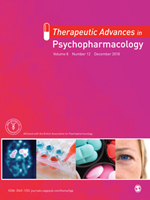 “Autism Spectrum Disorders comprise conditions that may affect cognitive development, motor skills, social interaction, communication, and behavior. This set of functional deficits often results in lack of independence for the diagnosed individuals, and severe distress for patients, families, and caregivers.
“Autism Spectrum Disorders comprise conditions that may affect cognitive development, motor skills, social interaction, communication, and behavior. This set of functional deficits often results in lack of independence for the diagnosed individuals, and severe distress for patients, families, and caregivers.
There is a mounting body of evidence indicating the effectiveness of pure cannabidiol (CBD) and CBD-enriched Cannabis sativa extract (CE) for the treatment of autistic symptoms in refractory epilepsy patients. There is also increasing data support for the hypothesis that non-epileptic autism shares underlying etiological mechanisms with epilepsy.
Here we report an observational study with a cohort of 18 autistic patients undergoing treatment with compassionate use of standardized CBD-enriched CE (with a CBD to THC ratio of 75/1).
Among the 15 patients who adhered to the treatment (10 non-epileptic and five epileptic) only one patient showed lack of improvement in autistic symptoms. Due to adverse effects, three patients discontinued CE use before 1 month.
After 6-9 months of treatment, most patients, including epileptic and non-epileptic, showed some level of improvement in more than one of the eight symptom categories evaluated: Attention Deficit/Hyperactivity Disorder; Behavioral Disorders; Motor Deficits; Autonomy Deficits; Communication and Social Interaction Deficits; Cognitive Deficits; Sleep Disorders and Seizures, with very infrequent and mild adverse effects.
The strongest improvements were reported for Seizures, Attention Deficit/Hyperactivity Disorder, Sleep Disorders, and Communication and Social Interaction Deficits. This was especially true for the 10 non-epileptic patients, nine of which presented improvement equal to or above 30% in at least one of the eight categories, six presented improvement of 30% or more in at least two categories and four presented improvement equal to or above 30% in at least four symptom categories.
Ten out of the 15 patients were using other medicines, and nine of these were able to keep the improvements even after reducing or withdrawing other medications.
The results reported here are very promising and indicate that CBD-enriched CE may ameliorate multiple ASD symptoms even in non-epileptic patients, with substantial increase in life quality for both ASD patients and caretakers.”
https://www.ncbi.nlm.nih.gov/pubmed/31736860
“The findings presented here, taken together, support the notion that many autism symptoms are associated to neuronal hyperexcitability, and indicate that CBD-enriched CE yields positive effects in multiple autistic symptoms, without causing the typical side effects found in medicated ASD patients. Most patients in this study had improved symptoms even after supervised weaning of other neuropsychiatric drugs.”
https://www.frontiersin.org/articles/10.3389/fneur.2019.01145/full
 “Drug-resistant seizures are life-threatening and contribute to sustained hospitalization.
“Drug-resistant seizures are life-threatening and contribute to sustained hospitalization.
 “Neuroinflammation is associated with many neurodegenerative diseases, including amyotrophic lateral sclerosis (ALS). In this study, we investigate the anti-inflammatory, anti-oxidant, and anti-apoptotic properties of two non-psychoactive phytocannabinoids, cannabigerol (CBG) and
“Neuroinflammation is associated with many neurodegenerative diseases, including amyotrophic lateral sclerosis (ALS). In this study, we investigate the anti-inflammatory, anti-oxidant, and anti-apoptotic properties of two non-psychoactive phytocannabinoids, cannabigerol (CBG) and  “This review is to summarize most recent evidence published in the last 18 months on medical and recreational use of cannabis and
“This review is to summarize most recent evidence published in the last 18 months on medical and recreational use of cannabis and  “Autism Spectrum Disorders comprise conditions that may affect cognitive development, motor skills, social interaction, communication, and behavior. This set of functional deficits often results in lack of independence for the diagnosed individuals, and severe distress for patients, families, and caregivers.
“Autism Spectrum Disorders comprise conditions that may affect cognitive development, motor skills, social interaction, communication, and behavior. This set of functional deficits often results in lack of independence for the diagnosed individuals, and severe distress for patients, families, and caregivers. “This paper aimed to systematically examine the efficacy and adverse event (AE) profile of
“This paper aimed to systematically examine the efficacy and adverse event (AE) profile of  “The protective effect of
“The protective effect of  “Use of
“Use of  “Chronic pain is highly prevalent in most of the industrialized nations around the world. Despite the documented adverse effects, opioids are widely used for pain management.
“Chronic pain is highly prevalent in most of the industrialized nations around the world. Despite the documented adverse effects, opioids are widely used for pain management.  “Accumulating evidence implicates the endocannabinoid system in the pathophysiology of psychosis.
“Accumulating evidence implicates the endocannabinoid system in the pathophysiology of psychosis. “Depression is a widespread psychological disorder that affects up to 20% of the world’s population. Traditional Chinese medicine (TCM), with its unique curative effect in depression treatment, is gaining increasing attention as the discovery of novel antidepressant drug has become the pursuit of pharmaceutical. This article summarizes the work done on the natural products from TCM that have been reported to conceive antidepressant effects in the past two decades, which can be classified according to various mechanisms including increasing synaptic concentrations of monoamines, alleviating the hypothalamic-pituitary-adrenal (HPA) axis dysfunctions, lightening the impairment of neuroplasticity, fighting towards immune and inflammatory dysregulation. The antidepressant active ingredients identified can be generally divided into saponins, flavonoids, alkaloids, polysaccharides and others. Albiflorin, Baicalein, Berberine chloride, beta-Asarone, cannabidiol, Curcumin, Daidzein, Echinocystic acid (EA), Emodin, Ferulic acid, Gastrodin, Genistein, Ginsenoside Rb1, Ginsenoside Rg1, Ginsenoside Rg3, Hederagenin, Hesperidin, Honokiol, Hyperoside, Icariin, Isoliquiritin, Kaempferol, Liquiritin, L-theanine, Magnolol, Paeoniflorin, Piperine, Proanthocyanidin, Puerarin, Quercetin, Resveratrol (trans), Rosmarinic acid, Saikosaponin A, Senegenin, Tetrahydroxystilbene glucoside and Vanillic acid are Specified in this review. Simultaneously, chemical structures of the active ingredients with antidepressant activities are listed and their sources, models, efficacy and mechanisms are described. Chinese compound prescription and extracts that exert antidepressant effects are also introduced, which may serve as a source of inspiration for further development. In the view of present study, the antidepressant effect of certain TCMs are affirmative and encouraging. However, there are a lot of work needs to be done to evaluate the exact therapeutic effects and mechanisms of those active ingredients, specifically, to establish a unified standard for diagnosis and evaluation of curative effect.”
“Depression is a widespread psychological disorder that affects up to 20% of the world’s population. Traditional Chinese medicine (TCM), with its unique curative effect in depression treatment, is gaining increasing attention as the discovery of novel antidepressant drug has become the pursuit of pharmaceutical. This article summarizes the work done on the natural products from TCM that have been reported to conceive antidepressant effects in the past two decades, which can be classified according to various mechanisms including increasing synaptic concentrations of monoamines, alleviating the hypothalamic-pituitary-adrenal (HPA) axis dysfunctions, lightening the impairment of neuroplasticity, fighting towards immune and inflammatory dysregulation. The antidepressant active ingredients identified can be generally divided into saponins, flavonoids, alkaloids, polysaccharides and others. Albiflorin, Baicalein, Berberine chloride, beta-Asarone, cannabidiol, Curcumin, Daidzein, Echinocystic acid (EA), Emodin, Ferulic acid, Gastrodin, Genistein, Ginsenoside Rb1, Ginsenoside Rg1, Ginsenoside Rg3, Hederagenin, Hesperidin, Honokiol, Hyperoside, Icariin, Isoliquiritin, Kaempferol, Liquiritin, L-theanine, Magnolol, Paeoniflorin, Piperine, Proanthocyanidin, Puerarin, Quercetin, Resveratrol (trans), Rosmarinic acid, Saikosaponin A, Senegenin, Tetrahydroxystilbene glucoside and Vanillic acid are Specified in this review. Simultaneously, chemical structures of the active ingredients with antidepressant activities are listed and their sources, models, efficacy and mechanisms are described. Chinese compound prescription and extracts that exert antidepressant effects are also introduced, which may serve as a source of inspiration for further development. In the view of present study, the antidepressant effect of certain TCMs are affirmative and encouraging. However, there are a lot of work needs to be done to evaluate the exact therapeutic effects and mechanisms of those active ingredients, specifically, to establish a unified standard for diagnosis and evaluation of curative effect.”